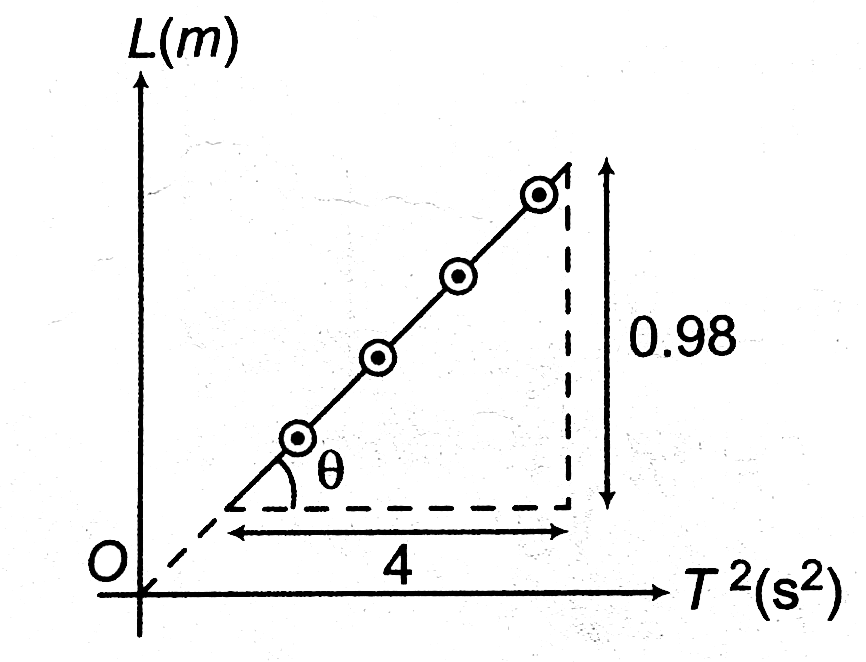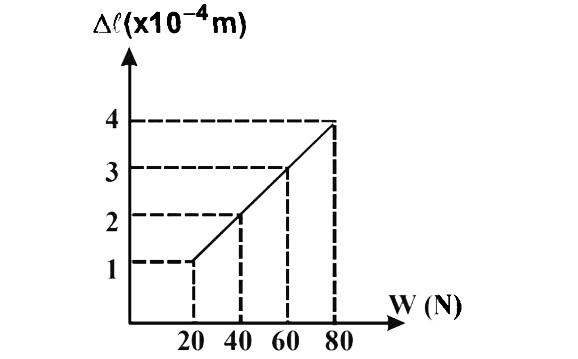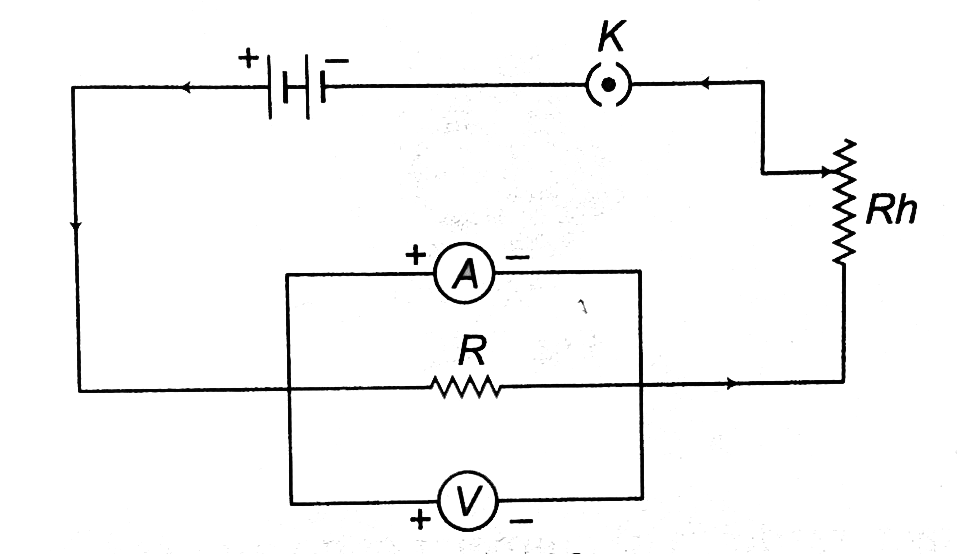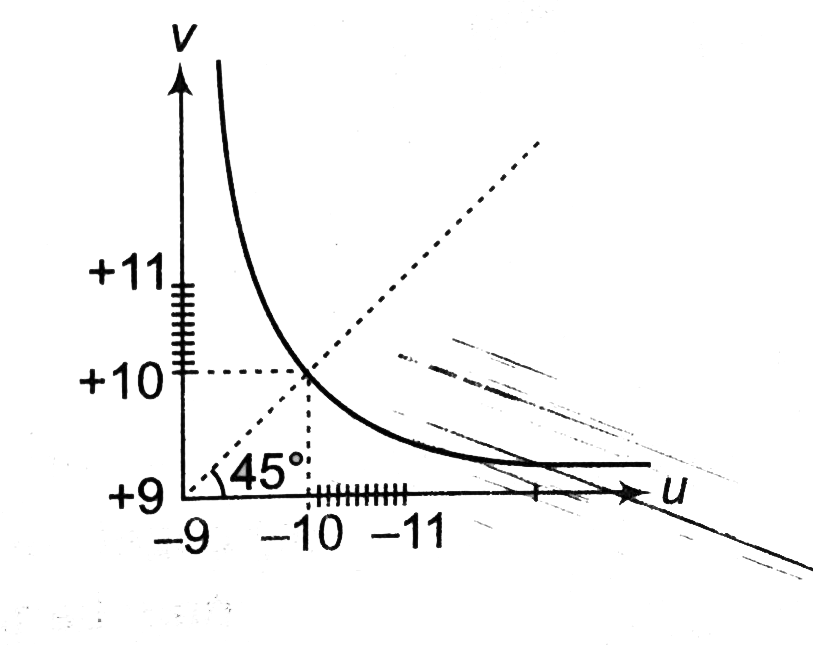Complete Solutions to Example of chapter EXPERIMENTS of Class 11 book with complete answers and questions
| Class 11 | PHYSICS |
| Chapter | EXPERIMENTS |
| DC PANDEY | Example |
| Number Of Questions | 27 |
| Academic Year | 2023-24 |
If `n^(th)` division of main scale coincides with `(n + 1)^(th)` divisions of vernier scale. Given one main scale division is equal to 'a' units. Find the least count of the vernier.
02:59View SolutionIn the diagram shown in figure, find the magnitude and nature of zero error.
 .01:44View Solution
.01:44View SolutionThe smallest division on main scale of a vernier caplliers is `1 mm and 10` vernier divisions coincide with `9` main scale divisions. While measuring the length of a line, the zero mark of the vernier scale lies between `10.2 cm and 10.3 cm` and the third division of vernier scale coincides with a main scale division.
(a) Determine the least count of the callopers.
(b) Find the length of the line.02:52View SolutionThe pitch of a screw gauge is `1 mm and there are 100 divisions` on the circular scale. In measuring the diameter of a sphere there are six divisions on the linear scale and forty divisions on circular scale coincide with the reference line. Find the diameter of the sphere.
02:04View SolutionThe pitch of a screw gauge is 1 mm and there are `100 "divisions"` on circular scale. When faces `A` and `B` are just touching each without putting anything between the studs 32nd divisions of the circular scale (below its Zero) coincides with the reference line. When a glass plate is placed between the studs, the linear scale reads 4 divisions and the circular reads 16 divisions. Find the thickness of the glass plate. Zero of linnear scale is not hidden from circular scale when A and B touches each other.
03:50View SolutionIn a certain observation we get `l =23.2 cm,r=1.32cm` and time taken for 20 oscillations was 20.0 sec. Taking `pi^2=10,`find the value of g in proper significant figures.
03:27View SolutionFor different values of `L`, we get different values of `T^2`. The graph between `L` versus `T^2` ia as shown in figure. Find the value of 'g' from the given graph.(Take `(pi)^2= 10)`.
 .02:14View Solution
.02:14View SolutionIn a certain obervation we got,`l = 23.2cm,r =1.32cm` and time taken for 10 oscillations was 10.0 s. Find, maximum percentage error in determinaton of 'g'.
07:22View SolutionThe adjacent graph shows the estension `(Deltal)` of a wire of length 1m suspended from the top of a roof at one end and with a load W connected to the other end. If the cross-sectional area of the wire is `10^-6m^2`, calculate the Young's modulus of the material of the wire.
 02:06View Solution
02:06View SolutionIn Searl's experiment, which is used to find Young's Modulus of elasticity, the diameter of experimental wire is `D = 0.05cm` (measured by a scale of least count `0.001cm`) and length is `L = 110cm` (measured by a scale of least count `0.1cm`). A weight of `50N` causes an extension of `X = 0.125 cm` (measured by a micrometer of least count `0.001cm`). find the maximum possible error in the values of Young's modulus. Screw gauge and meter scale are free error.
04:40View SolutionThe mass, specific heat capacity and the temperature of a solid are `1000g,(1)/(2) cal/g - .^(@)C` and `80^(@)C` respectively. The mass of the liquid and the calorimeter are `900g` and `200g`. Initially,both are at room temperature `20^(@)C` Both calorimeter and the solid are made of same material. In the steady state, temperature of mixture is `40^(@)C`, then specific heat capacity of the unknown liquid.
05:00View SolutionIn electrical calorimeter experiment, voltage across the heater is `100.0 V` and current is `10.0 A`. Heater is switched on for t `= 700.0 s`. Room temperature is `theta_0 = 10.0^(@)C` and final temperature of calorimeter and unknown liquid is `theta_f = 73.0^(@) C`. Mass of empty calorimeter is `m_1 = 1.0kg` and combined mass of calorimeter and unknown liquid is `m_2 = 3.0 kg`. Find the specificheat capacity of the unknown liquid in proper significant figures. Specific heat of calorimerter = `3.0xx10^3 j//kg .^(@) C`.
03:46View SolutionCorresponding to given observation calculate speed of sound. Frequency of tuning fork =340 Hz.
`{:("Resonance","Length from the water level in (cm)",),(,"During falling","During rising"),("First",23.9,24.1),("Second",73.9,74.1):}`.02:51View SolutionIf a tuning fork of frequency `(340 pm 1 %)` is used in the resonance tube method and the first and second resonance lengths are `20.0cm` and `74.0 cm` respectively. Find the maximum possible percentage error in speed of sound.
02:57View SolutionWhat result do you expect in above experiment, if by mistake, voltmeter is connected in series with the resistance.
02:44View SolutionWhat result do you expect in above experiment if by mistake, ammeter is connected in parallel with voltmeter and resistance as shown in figure?
 .02:39View Solution
.02:39View SolutionIn the experiment of Ohm's law, when potential difference of 10.0 V is applied, current measured is 1.00 A. If length of wire is found to be 10.0cm and diameter of wire 2.50 mm, then find maximum permissible percentage error in resistivity.
04:20View SolutionDraw the circuit for experimental verfication of Ohm's law using a source of variable `DC` voltage, a main resistance of `100 (Omega)`, two galvanometers and two resistances of values `10^(6) Omega` and `10^-3` respectively. Clearly show the positions of the voltmeter and the ammeter.
03:22View SolutionIf resistance`R_(1)` in resistance box is `300 Omega`, then the balanced length is found to be `75.0 cm` from end `A`.The diameter of known wire is `1 mm` and length of the unknown wire is `31.4 cm`. Find the specific resistance of the unknown wire.
04:35View SolutionIn a meter bride, null point is `20 cm`, when theknown resistence `R` is shunted by `10 Omega` resistence, null point is found to be shifted by `10 cm` . Find the unknown resistence `X`.
04:57View SolutionIf we use `100 Omega` and `200 Omega` in place of `R` and `X` we get null pont deflection, `l = 33cm`. If we intercharge the resistors, the null point length is found to be `67 cm` Find end corrections `prop and beta`.
02:05View SolutionTo locate null point, deflection battery key `K_(1)` is pressed before the galvanometer key `K_(2)`. Explain why?
03:04View SolutionWhat are the maximum and minimum values of unknown resistance `X`, which can be determined using the post office box shown in the fig.3.34?
04:37View SolutionTo find index error `e` distance between object needle and poler of the concave mirror is `20 cm`. The separation between the indices of object needle and mirror was observed to be `20.2 cm` in some observation, the observed image distance is `20.2 cm` and the object distance is `30.2 cm` find
(a) the index error e.
(b) focal length of the mirror `f`.02:18View SolutionIn `u-v` method to find focal length of a concave mirror, if object distance is found to be `10.0 cm` and image distance was also found to be `10.0 cm`, then find maximum permissible error in (f).
03:21View SolutionA student performed the experiment of determination of focal length of a concave mirrior by (u-v) method using ac optical bench of length `1.5m`. The focal length of the mirrir used is `24 cm`. The maximum error in the location of the image can be ` 0.2 cm`. The 5 sets of (u,v) values recorded by the student (in cm) are `(42,56), (48,48),(60,33),(78,39)`. the data set (s) that cannot caome from experiment and is (are) incorrectly recorded, is (are)
(a) `(42,56)`
`(48,48)`
`(66,33)`
`(78,39)`.02:55View SolutionThe graph between object distance `u` and image distance` v` for `a` lens is given below. The focal length of the lens is.
(a) `5 pm 0.1`
(b) `5 pm 0.05`
( c) `0.5 pm 0.1`
(d) `0.5 pm 0.05`.
 .03:08View Solution
.03:08View Solution
Example questions and complete solutions for chapter EXPERIMENTS of DC PANDEY PHYSICS (HINGLISH) of Class 11
